 W
WAn ambush is a long-established military tactic in which combatants take advantage of concealment and the element of surprise to attack unsuspecting enemy combatants from concealed positions, such as among dense underbrush or behind hilltops. Ambushes have been used consistently throughout history, from ancient to modern warfare. In the 20th century, an ambush might involve thousands of soldiers on a large scale, such as over a choke point such as a mountain pass, or a small irregular band or insurgent group attacking a regular armed force patrol. Theoretically, a single well-armed and concealed soldier could ambush other troops in a surprise attack. Sometimes an ambush can involve the exclusive or combined use of improvised explosive devices, that allow the attackers to hit enemy convoys or patrols while minimizing the risk of being exposed to return fire.
 W
WThe Ambush at Drumnakilly was a military confrontation that took place at Drumnakilly in County Tyrone, Northern Ireland on 30 August 1988 during The Troubles, when a detachment of the Provisional IRA (IRA) was ambushed by the British Army.
 W
WThe Ambush of Geary was a skirmish of the American Revolutionary War fought on 14 December 1776 near Ringoes in Amwell Township, Hunterdon County, New Jersey. Cornet Francis Geary, the leader of a company of dragoons, was shot in an ambush set up by local militiamen.
 W
WThe Selton Hill Ambush took place on 11 March 1921, during the Irish War of Independence. An Irish Republican Army (IRA) flying column was ambushed by members of the RIC Auxiliary Division at Selton Hill, County Leitrim. Six IRA officers of the Leitrim Brigade were killed.
 W
WThe Balamorghab ambush occurred on 27 November 2008, when vehicles carrying Afghan security forces were attacked by Taliban insurgents led by Ghulam Dastagir. The ambush took place near Balamorghab in Badghis Province, in northwestern Afghanistan, and resulted in heavy casualties for the government forces. It was described as "one of the most humiliating attacks the Afghan security forces had ever suffered".
 W
WThe Battle of Lake Trasimene was fought when a Carthaginian force under Hannibal ambushed a Roman army commanded by Gaius Flaminius on 21 June 217 BC, during the Second Punic War. It took place on the north shore of Lake Trasimene, to the east of Cortona, and resulted in a heavy defeat for the Romans. The First Punic War between Carthage and Rome ended in 241 BC after 23 years. In 219 BC the quasi-monarchial, autonomous ruler of the Carthaginian territories in south-east Iberia, Hannibal, besieged, captured and sacked the Roman protected town of Saguntum. The following spring Rome declared war on Carthage and Hannibal left Iberia for Italy with a major military expedition. Crossing the Alps Hannibal arrived in Cisalpine Gaul in autumn 218 BC. The Romans rushed reinforcements north from Sicily and the Carthaginians engaged and defeated the combined Roman army at the Battle of the Trebia.
 W
WThe Boyd and Parker ambush was a minor military engagement in Groveland, New York on September 13, 1779, during the American Revolutionary War. A scout group of the Sullivan Expedition was ambushed and captured by Loyalists and their Seneca Indian allies led by Little Beard.
 W
WThe Carrowkennedy ambush was an ambush carried out by the Irish Republican Army (IRA) on 2 June 1921, during the Irish War of Independence. An IRA flying column, commanded by Michael Kilroy, ambushed a mobile patrol of the Royal Irish Constabulary Special Reserves at Carrowkennedy, near Westport, County Mayo. It resulted in the deaths of eight of the RIC, including some who were killed by their own rifle grenade. After two hours the RIC surrendered and their weaponry and ammunition were seized by the IRA.
 W
WThe Clonfin Ambush was an ambush carried out by the Irish Republican Army (IRA) on 2 February 1921, during the Irish War of Independence. It took place in the townland of Clonfin between Ballinalee and Granard in County Longford. The IRA ambushed two lorries carrying members of the British Auxiliary Division, sparking a lengthy gun battle in which four Auxiliaries were killed and eight wounded. The Auxiliaries eventually surrendered and their weapons were seized. The IRA commander, Seán Mac Eoin, won some praise for helping the wounded Auxiliaries. Following the ambush, British forces burned a number of houses and farms in the area, and shot dead an elderly farmer.
 W
WThe Clonmult ambush took place on 20 February 1921, during the Irish War of Independence.
 W
WThe Clonoe Ambush was a military action between the British Army and the Provisional Irish Republican Army (IRA) that occurred during The Troubles in Northern Ireland. On 16 February 1992, an IRA unit attacked the Royal Ulster Constabulary security base in the village of Coalisland in County Tyrone, and was ambushed shortly afterwards by the Special Air Service (SAS) in the grounds of a church in the village of Clonoe whilst attempting to make its escape, resulting in several IRA fatalities.
 W
WThe Coagh ambush was a military confrontation that took place took place in County Tyrone, Northern Ireland, on 3 June 1991, during The Troubles, when a Provisional Irish Republican Army (IRA) active service unit from its East Tyrone Brigade was ambushed by the British Army's Special Air Service (SAS) at the village of Coagh, in County Tyrone, whilst on its way to kill a part-time member of the Ulster Defence Regiment (UDR). The ambush resulted in the deaths of all three IRA men involved.
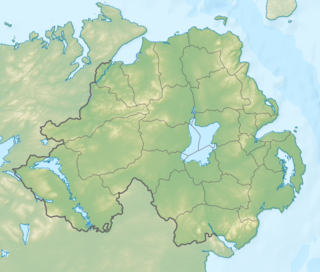 W
WOperation Conservation was a British Army attempt to ambush a large Provisional Irish Republican Army (IRA) unit along the Dorsey Enclosure, between Cullyhanna and Silverbridge, in south County Armagh. The action took place on 6 May 1990. The operation was uncovered and thwarted by the IRA South Armagh Brigade.
 W
WThe Coolavokig ambush was carried out by the Irish Republican Army (IRA) on 25 February 1921, during the Irish War of Independence. It took place at Coolavokig, on the road between Macroom and Ballyvourney, County Cork. A 60-man flying column of the IRA's 1st Cork Brigade under Seán O'Hegarty, ambushed a 70-man convoy of the Auxiliary Division under Major Seafield Grant, sparking a four-hour battle. Three Auxiliaries were killed, including Major Grant, and others wounded. The IRA column left the area when British reinforcements arrived. After the ambush, British forces stopped carrying out raids and patrols in the area.
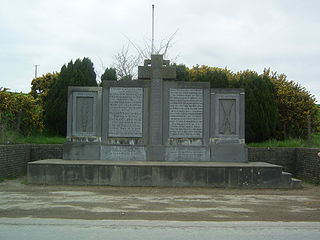 W
WThe Crossbarry Ambush or Battle of Crossbarry occurred on 19 March 1921 and was one of the largest engagements of the Irish War of Independence. It took place near the small village of Crossbarry in County Cork, about 20 km south-west of Cork city. About a hundred Irish Republican Army (IRA) volunteers, commanded by Tom Barry, escaped an attempt by about 1,200 British troops to encircle them. During the hour-long battle, ten British troops and three IRA volunteers were killed.
 W
WOn 21 December 1978, three British soldiers were shot dead when the Provisional IRA's South Armagh Brigade ambushed an eight-man British Army foot patrol in Crossmaglen, County Armagh, Northern Ireland.
 W
WThe Dromkeen ambush took place on 3 February 1921, during the Irish War of Independence, at Dromkeen in County Limerick. The Irish Republican Army (IRA) ambushed a Royal Irish Constabulary (RIC) patrol, killing 11 policemen.
 W
WThe Drummuckavall ambush was an attack by the South Armagh Brigade of the Provisional Irish Republican Army (IRA) on a British Army observation post in Drummuckavall, southeast of Crossmaglen, County Armagh, on 22 November 1975. The attack, which occurred along the border with the Republic of Ireland, resulted in the deaths of three British soldiers and underlined the inefficiency of conventional military skills to deal with the situation in South Armagh, prompting the deployment of the Special Air Service (SAS) in this area.
 W
WThe 1956 Eilat bus ambush was an attack on an Egged bus traveling from Tel-Aviv to Eilat on August 16, 1956. The Israeli civilian bus was ambushed by a Fedayeen squad on August 16, 1956. Four passengers were killed and three were injured.
 W
WOn the 17 July 1975 the South Armagh Brigade of the Provisional IRA (IRA) detonated a land mine when a British Army foot patrol passed over the land mine, killing four British soldiers and seriously injuring another. This was the first major breach in the truce negotiated by the IRA and British government back in February 1975. The attack took place in Forkhill which was right on the Irish border and a safe haven for IRA Volunteers from South Armagh.
 W
WThe Garryhinch ambush was a surprise attack on the Garda Síochána by the Provisional IRA on 16 October 1976. A bomb planted by the IRA in a farmhouse at Garryhinch on the County Laois-County Offaly border in the Republic of Ireland was exploded. Garda Michael Clerkin was killed in the blast and four other Gardaí at the scene were badly wounded. The incident was one of the few occasions during The Troubles when police officers in the Republic of Ireland were deliberately targeted.
 W
WThe Glasdrumman ambush was an attack by the South Armagh Brigade of the Provisional Irish Republican Army (IRA) against a British Army observation post in Glasdrumman, County Armagh on 17 July 1981. An attempted ambush by the British Army on IRA members at a scrapyard southwest of Crossmaglen was itself ambushed, resulting in the death of one British soldier and the IRA retaining ability to set up checkpoints in South Armagh.
 W
WThe Hadassah convoy massacre took place on April 13, 1948, when a convoy, escorted by Haganah militia, bringing medical and military supplies and personnel to Hadassah Hospital on Mount Scopus, Jerusalem, was ambushed by Arab forces.
 W
WThe Hadong Ambush was an engagement between United States and North Korean forces, occurring on July 27, 1950, in the village of Hadong in southern South Korea, early in the Korean War. The fight ended in a North Korean victory following a successful ambush of US forces which resulted in heavy American casualties.
 W
WThe Headford Ambush was carried out by the Irish Republican Army (IRA) on 21 March 1921, during the Irish War of Independence. The IRA's 2nd Kerry Brigade ambushed a train carrying British troops of the Royal Fusiliers at Headford Junction railway station near Killarney, County Kerry. This sparked a battle lasting almost an hour, in which at least 14 people were killed – nine British soldiers, two IRA volunteers and three civilians. The IRA withdrew after another train carrying British troops arrived.
 W
WThe Holywell Ambush was an ambush on the Ballyhaunis to Claremorris road near Holywell in the early hours of Monday, 2 August 1920 carried out by the Irish Republican Army (IRA) during the Irish War of Independence. Approximately 20 local IRA volunteers commanded by Patrick Kenny attacked a British Military outpost that was guarding a broken down lorry.
 W
WThe Jonesborough ambush took place on 20 March 1989 near the Irish border outside the village of Jonesborough, County Armagh, Northern Ireland. Two senior Royal Ulster Constabulary (RUC) officers, Chief Superintendent Harry Breen and Superintendent Bob Buchanan, were shot dead in an ambush by the Provisional IRA South Armagh Brigade. Breen and Buchanan were returning from an informal cross-border security conference in Dundalk with senior Garda officers when Buchanan's car – a red Vauxhall Cavalier — was flagged down and fired upon by six IRA gunmen, who the policemen had taken for British soldiers. Buchanan was killed outright whilst Breen, suffering gunshot wounds, was deliberately shot in the back of the head after he had left the car waving a white handkerchief. They were the highest-ranking RUC officers to be killed during the Troubles.
 W
WOn 2 December 1984, a four-man Provisional Irish Republican Army (IRA) active service unit was ambushed by a British Army Special Air Service team while attempting to bomb a Royal Ulster Constabulary patrol who they had lured to Drumrush Lodge Restaurant. Two IRA volunteers and one SAS soldier were killed during the action.
 W
WThe Kilmeena ambush was an action during the Irish War of Independence that took place at Kilmeena, County Mayo on 19 May 1921. The ambush ended in defeat for the local West Mayo Irish Republican Army (IRA), with six IRA volunteers killed and seven wounded. Two members of the Royal Irish Constabulary (RIC) and one Black and Tan were also killed in the action.
 W
WThe Kilmichael Ambush was an ambush near the village of Kilmichael in County Cork on 28 November 1920 carried out by the Irish Republican Army (IRA) during the Irish War of Independence. Thirty-six local IRA volunteers commanded by Tom Barry killed seventeen members of the Royal Irish Constabulary's Auxiliary Division. The Kilmichael ambush was politically as well as militarily significant. It occurred one week after Bloody Sunday, marking an escalation in the IRA's campaign.
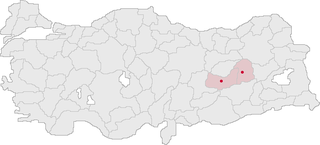 W
WThe May 24, 1993 PKK ambush was a PKK ambush on Turkish soldiers that was carried out against unarmed Turkish military recruits on the Elazığ-Bingöl highway, executing 33 off-duty Turkish soldiers and 5 civilians, thus breaking the first ever Kurdistan Workers' Party (PKK) cease-fire with the Turkish government. Turkish authorities claimed that according to Abdullah Öcalan's testimony in 1999, it was carried out by a regional PKK commander..
 W
WThe Mullacreevie ambush took place on 1 March 1991, when a mobile patrol of the Ulster Defence Regiment composed of two Land Rover vehicles was attacked by a Provisional IRA active service unit with an improvised horizontal mortar while passing near Mullacreevie housing estate, on the west side of Armagh City. One member of the UDR was killed instantly when the leading Land Rover was hit, while another died of wounds two days later. Two other soldiers were maimed for life.
 W
WThe Niemba ambush took place on 8 November 1960, when an Irish Army platoon in Congo-Léopoldville was ambushed, the first time the Irish Army was embroiled in battle since the founding of the Irish state in 1922. The Republic of Ireland had deployed troops as United Nations Operation in the Congo (ONUC) peacekeepers.
 W
WOn 19 March 2015, a convoy of the National Gendarmerie, a subdivision of the Mexican Federal Police (PF), was ambushed by gunmen of the Jalisco New Generation Cartel (CJNG), a criminal group based in Jalisco, Mexico. The attack occurred in a residential neighborhood in Ocotlán, Jalisco. Five policemen, four CJNG gunmen, and two civilian bystanders were killed. According to police reports, as the PF convoy pulled up next to a parked vehicle, gunmen shot at them from the vehicle and from rooftops. The police attempted to shield themselves using their patrol cars, but reinforcements from the CJNG arrived at the scene and overwhelmed them. The shootout lasted between thirty minutes to two hours before the CJNG fled the scene.
 W
WThe Rineen ambush was an ambush carried out by the Irish Republican Army (IRA) on 22 September 1920, during the Irish War of Independence. It took place at Drummin Hill in the townland of Drummin, near the hamlet of Rineen, County Clare.
 W
WOn 6 April 2015, a convoy of the Jalisco State Police was ambushed by suspected members of the Jalisco New Generation Cartel (CJNG), a criminal group based in Jalisco. The attack occurred in a mountain road in San Sebastián del Oeste, Jalisco. Fifteen policemen were killed and five were wounded; no CJNG casualties were confirmed. According to police reports, as the police convoy reached a part of the road surrounded by mountains, the CJNG opened fire at the police units from the sides using high-caliber rifles, grenade launchers, and explosives with gasoline. The element of surprise prevented the police from repelling the aggression. The CJNG members burned several vehicles along the highway to halt reinforcements. The attack lasted roughly 30 minutes. When government reinforcements reached the scene, the CJNG gunmen had left.
 W
WThe Scramoge ambush was an ambush carried out by the Irish Republican Army (IRA) on 23 March 1921, during the Irish War of Independence. The IRA ambushed a lorry carrying British troops and Royal Irish Constabulary (RIC) officers at Scramoge, near Strokestown in County Roscommon. Three British soldiers and an RIC officer were killed, while two RIC 'Black and Tans' were captured and shot dead shortly after.
 W
WThe Sheemore ambush was an ambush carried out by the Irish Republican Army (IRA) on 4 March 1921, during the Irish War of Independence. It took place at Sheemore near Carrick-on-Shannon, County Leitrim.
 W
WThe Soloheadbeg ambush took place on 21 January 1919, when members of the Irish Volunteers ambushed Royal Irish Constabulary (RIC) officers who were escorting a consignment of gelignite explosives at Soloheadbeg, County Tipperary. Two RIC officers were killed and their weapons and the explosives were seized. The Volunteers acted on their own initiative and had not sought authorisation for their action. As it happened on the same day that the revolutionary Irish parliament first met and declared Ireland's independence, it is often seen as the first engagement of the Irish War of Independence.
 W
WThe Strabane Ambush was a British Special Air Service ambush against a three man Provisional Irish Republican Army (IRA) unit. All three members of the IRA unit were killed in the ambush. At the time it was the most successful SAS operation against the IRA, until the Loughgall ambush two years later in 1987 in which eight IRA volunteers were killed.
 W
WThe Battle of the Teutoburg Forest, described as the Varian Disaster by Roman historians, took place in the Teutoburg Forest in 9 CE, when an alliance of Germanic peoples ambushed and destroyed three Roman legions and their auxiliaries, led by Publius Quinctilius Varus. The alliance was led by Arminius, a Germanic officer of Varus's auxilia. Arminius had acquired Roman citizenship and had received a Roman military education, which enabled him to deceive the Roman commander methodically and anticipate the Roman army's tactical responses.
 W
WThe Tongo Tongo ambush or the Niger ambush occurred on 4 October 2017, when armed militants from the Islamic State in the Greater Sahara (ISGS) attacked Nigerien and US soldiers outside the village of Tongo Tongo, Niger while they were returning to base after a stop in the village. During the ambush, five Nigeriens, four US soldiers, and at least 21 ISGS militants were killed and eight Nigeriens and two US soldiers including the team commander were wounded. In the day preceding the ambush, the Nigerien and US soldiers conducted a mission attempting to locate and capture or kill Doundou Chefou, a commander in the ISGS.
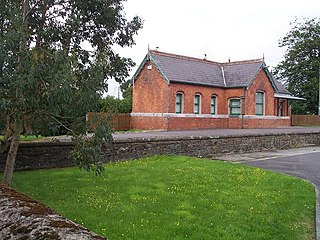 W
WThe Upton train ambush took place on 15 February 1921, during the Irish War of Independence. The Irish Republican Army (IRA) mounted an attack on a train carrying British soldiers at Upton, County Cork. The action was a disaster for the IRA; three of its volunteers were killed and two wounded. Six British soldiers were wounded, three seriously. Six civilian passengers were killed and ten wounded in the crossfire.
 W
WThe Vaudeville Theater ambush was the ambush and murder on March 11, 1884 by Joe Foster and Jacob Coy of former lawmen Ben Thompson and King Fisher. It took place at the Jack Harris Vaudeville Saloon and Theater in San Antonio, Texas. The ambush was in revenge for Ben Thompson's shooting of Jack Harris two years earlier.
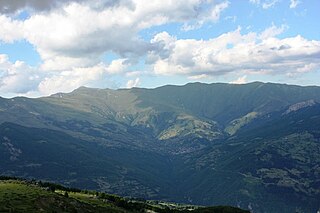 W
WThe Vejce ambush or Vejce Massacre occurred when ethnic Albanian rebels of the NLA, which then-NATO Secretary General George Robertson referred to as "a bunch of murderous thugs," killed eight soldiers of the ARM, on the late afternoon of 28 April 2001 near Vejce, a village in the Šar Mountains, Macedonia. It represent the heaviest death toll for the government forces in a single incident during the Insurgency in the Republic of Macedonia.
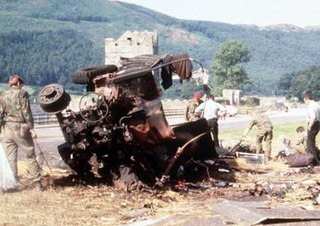 W
WThe Warrenpoint ambush, also known as the Narrow Water ambush, or instead called the Warrenpoint massacre or the Narrow Water massacre, was a successful guerrilla attack by the Provisional Irish Republican Army (IRA) on 27 August 1979. The IRA's South Armagh Brigade ambushed a British Army convoy with two large roadside bombs at Narrow Water Castle outside Warrenpoint, Northern Ireland. The first bomb was aimed at the convoy itself, and the second targeted the incoming reinforcements and the incident command point (ICP) set up to deal with the incident. IRA volunteers hidden in nearby woodland also allegedly fired on the troops, which returned fire. The castle is on the banks of the Newry River, which marks the border between Northern Ireland and the Republic of Ireland.
 W
WThe 2000 Zhani-Vedeno ambush took place on 29 March, when a mechanized column of Russian Interior Ministry troops was ambushed in the southern Vedensky District of Chechnya, and destroyed by the largely Dagestani force of multinational mujahideen who fought on Chechen separatist side under Arab commander Ibn al-Khattab and were led by Abu Quteiba, a field commander for the Islamic International Brigade. As the result of the attack on the convoy and on Russian relief forces, scores of Russian special police and paramilitary troops were killed or captured. Nine OMON officers were taken hostage and executed soon after Russian command refused to swap them for the arrested military officer Yuri Budanov.